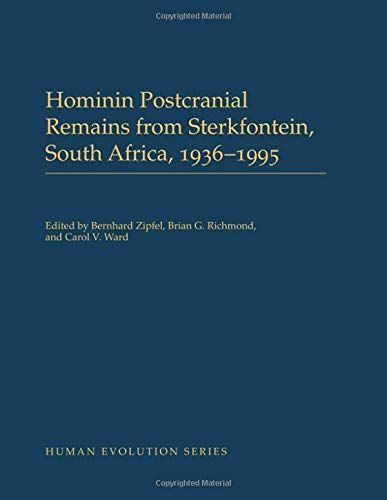
Hominin Postcranial Remains from Sterkfontein, South Africa, 1936-1995
The Sterkfontein hominin fossils generally are attributed to the species Australopithecus africanus, because most craniodental remains from the site are attributable to that taxon (reviews in Grine, 2013, 2019). However, there may be more than one hominin represented within the sample, even within the most productive Member, Member 4, and given the complex stratigraphy of the site and challenges in dating the deposits, this may or not may be the case. In general. Several studies have suggested the presence of two or more australopith taxon within the sample, each citing more morphological variation among the craniodental remains from Sterkfontein that can be attributed to a single species, at least compared to extant hominoid taxa (Kimbel and White, 1988; Clarke 1988, 1994; Lockwood, 1997, Lockwood and Tobias, 2002). However, it is notable that none of these studies agree on which specimens comprise the different possible taxa or groups, largely due to emphasis on different aspects of morphology varying among the fossils. The likely time depth of the Sterkfontein sample, even within Member 4, (see Chapter 3, this volume), may also complicate assessment of potential taxonomic heterogeneity at the site. None of the Sterkfontein postcranial fossils can be definitively associated with any craniodental specimens (but see Thackeray et al., 2002), and so cannot be related directly to any of the proposed taxonomic divisions within the sample. However, some studies have cited variation within the postcranial fossils that may also reflect taxonomic variation, although many studies to date have not tackled this question rigorously. Even though these suggestions have been made occasionally in the literature, no clear or consistent suggestion of two or more taxa has been apparent within the postcranial samples (reviewed in Grine 2019). Taxonomic variation is one of the key questions that each chapter in this volume addresses (summarized in Chapter 18, this volume)"--